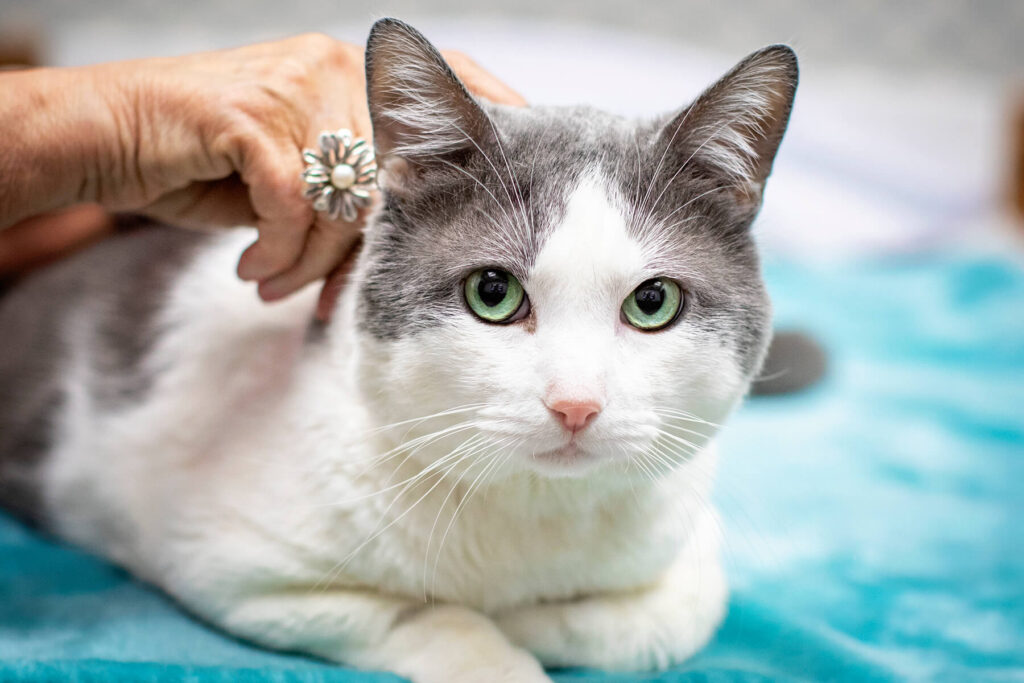Does your cat become overly stressed when visiting the veterinary office? It’s very common for a cat to become nervous, and sometimes stressed when going to the vet. We also understand how upsetting this can be for pet owners, too. Fortunately, you can minimize their anxiety and keep your furry friend calm when visiting the vet. Consider the following dos and don’ts before you journey to the vet.
1. DO Get Kitty Accustomed to the Carrier
Don’t wait until you have to travel to the vet’s office to place your cat in a new carrier. The trick is to get your cat used to the carrier beforehand. After bringing home a suitable cat carrier, place it down in a spot where your cat may inspect it at leisure and leave the entry door open. Place a warm familiar blanket on the bottom of the carrier and a favorite toy inside as well.
Let the carrier remain there for a few days so the cat will become used to its presence and hopefully become curious enough to inspect it. As your cat sniffs it, natural curiosity may build and your kitty might even climb inside. If your cat does not enter the carrier voluntarily, gently place your feline friend inside and secure the door. Leave the cat inside the carrier for a few minutes, then allow him or her out.
Repeat the process, which allows your pet to become used to being inside the carrier. Once your cat has no fear, you can calmly take the cat outside in the carrier and go for a short ride in the car. You might want to attempt the process daily for a week or so.
Don’t forget to reward your cat as you remove kitty from the carrier. Offer a favorite treat for good behavior and positive reinforcement.
2. DON’T Become Stressed Yourself
If you become anxious or agitated when going to the vet, your cat might notice your stress and behave negatively. Even if your cat resists the car ride, don’t become nervous or raise your voice. Staying calm may help your pet stay calm as well.
To keep the mood light and possibly calm nerves, try playing the radio in the car. Tune into soft, soothing sounds and talk softly to your pet as you drive. Staying calm and focused is key to reducing any stress your cat may experience.
If your cat displays aggression or fear when visiting the veterinary office, never scold or yell at your pet. Patience and understanding goes a long way under such circumstances.
3. DO Bring Along Help
If you want a little extra care for your cat while you travel to the vet, bring along a second person. One person can drive, while the other either holds the carrier or comforts the anxious cat in its carrier secured by a nearby seatbelt. The non-driving friend can also protect the carrier, ensuring it doesn’t jerk around while the vehicle is moving.
4. DON’T Feed Your Cat Before the Trip
Your cat shouldn’t be fed shortly before the car ride if medically acceptable. This especially may be a good idea if your pet has motion sickness. The veterinary team will want to feed lots of treats during the visit! Bring your cat hungry so that way they are eager to eat the snacks provided.
5. DO Have a Chat With Your Veterinarian
Communicating with the vet is essential. If your cat experiences anxiety no matter how hard you try to calm their nerves, talk to your vet. The doctor might suggest a calming sedative beforehand. The goal of these medications is to keep your cat from becoming stressed.
Before the vet prescribes a sedative, the vet will most likely want to exam your cat. Ruling out medical issues contributing to your cat’s stress is a crucial measure.
Always make sure to discuss any concerns, including those about anxiety, you may have with your vet regarding your pet’s health and behavior.

